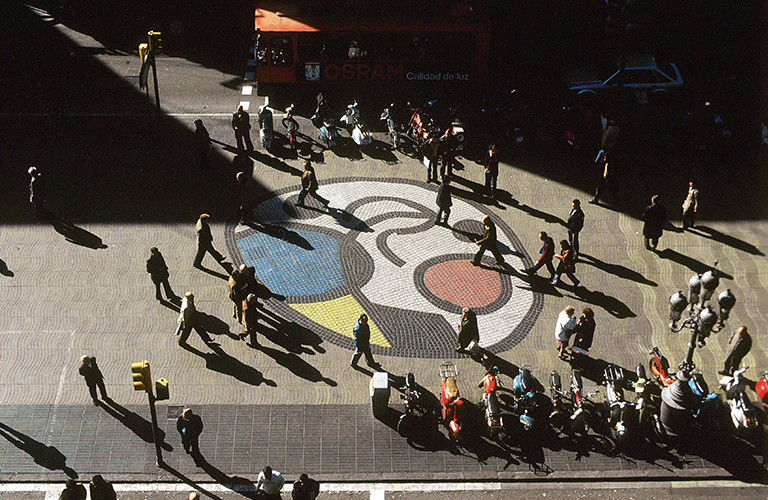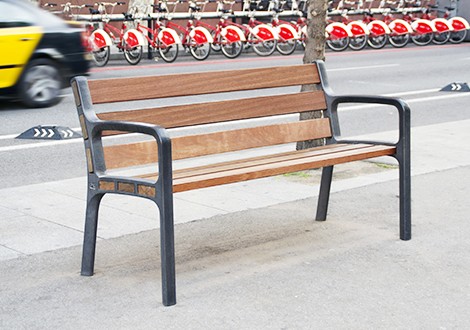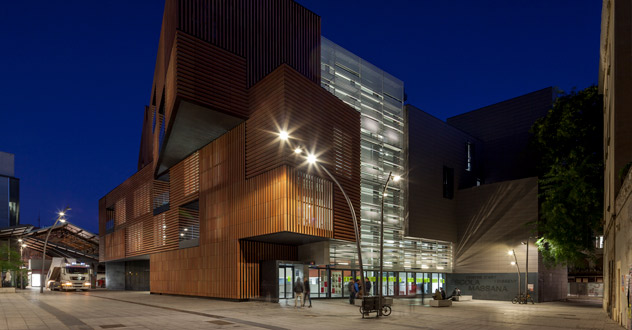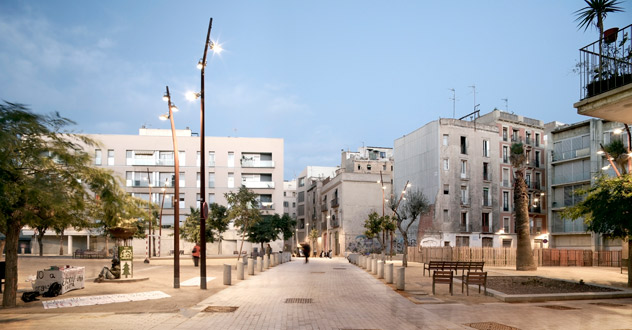
La Rambla emerged in 1766, in the same era as modernity, when a promenade was designed to follow the medieval wall running through this part of the city since the 13th century. Along the way, it passes several famous building including the Liceu Theatre, the Virreina Palace and the Boqueria market.
Escofet brought vibropressed concrete to Spain and generated a range of automatically manufactured pavements that proved ideal for outdoor installations. Its famous pavement for La Rambla, designed by Adolfo Florensa in 1968, consolidated the company’s high profile in the city.
La Rambla is now Barcelona’s most iconic boulevard. It runs for 1,200 metres from Plaza de Catalunya to Portal de la Pau, where it connects up with Rambla de Mar and continues to the old harbour.












